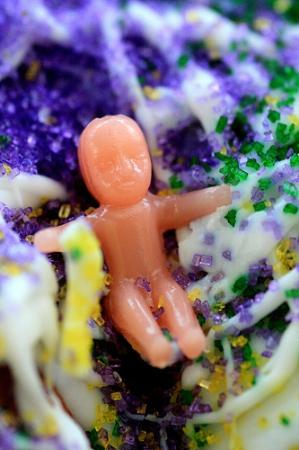Mardi Gras, originating from the French term for “Fat Tuesday,” encompasses a series of vibrant celebrations marking the culmination of Carnival festivities. Commencing on or after Epiphany and reaching its climax on the day preceding Ash Wednesday, Mardi Gras serves as a festive prelude to the solemn period of Lent.
The name “Fat Tuesday” reflects the custom of indulging in rich, fatty foods on the final evening before the onset of Lent, a season characterized by ritual fasting and reflection. This tradition, akin to the English practice of Shrove Tuesday, sets the stage for a joyous farewell to culinary excess before the austere observance of Lent.
In addition to feasting, Mardi Gras festivities are characterized by a myriad of popular practices aimed at revelry and merriment. These include donning masks and costumes, challenging social norms, engaging in spirited dances, participating in sporting competitions, and partaking in colorful parades. These lively traditions serve as a vibrant expression of communal joy and camaraderie, uniting participants in shared celebration before the onset of the penitential season of Lent.
The Mardi Gras cake, also known as king cake, stands as a sweet, yeasted ring deeply rooted in New Orleans tradition, marking the festive spirit of Mardi Gras and Carnival season. Crafted from brioche dough, it boasts tantalizing fillings such as cream cheese or fruit, adorned with icing and vibrant sugars, often concealing a small plastic baby figurine reminiscent of baby Jesus.
This indulgent treat is reserved for the Carnival season, commencing on Epiphany, 12 days after Christmas, and culminating on Mardi Gras Day, the eve of Ash Wednesday. While it can be enjoyed year-round, locals in New Orleans consider it customary to savor it exclusively during this vibrant period, encapsulating the essence of Carnival.
Every king cake holds a special trinket, often a tiny baby figurine, symbolizing a pivotal aspect of the holiday’s celebration. The fortunate recipient who discovers this trinket within their slice is bestowed with the title of “king” for a day, adding an element of whimsy and camaraderie to the festivities.
This beloved tradition has garnered attention and curiosity beyond the shores of Louisiana, sparking discussions and inquiries about its origins and customs. From delightful recipes shared on platforms like What A Girl Eats to queries about decorating techniques on Quora, the king cake continues to captivate enthusiasts worldwide, inviting them to partake in the jubilant spirit of Mardi Gras.
King Cake, adapted from Southern Living
Ingredients
Cake:
1/2 cup warm water (105°F to 115°F)
2 (1/4-oz.) package active dry yeast
1/2 cup plus 2 tsp. granulated sugar, divided
2 tsp. table salt
1 tsp. ground nutmeg
1 tsp. lemon zest (from 1 lemon)
4 – 5 cups all-purpose flour, plus more for work surface
4 large egg yolks
1/2 cup warm milk (105°F to 115°F)
1/2 cup (4 oz.) unsalted butter, melted
Cooking spray
1/2 cup finely chopped candied citron (optional)
Unsalted butter, for baking sheet
1 pecan half or uncooked dried bean
Glaze:
2 cups powdered sugar, sifted
2 Tbsp. fresh lemon juice (from 1 lemon)
2 Tbsp. water
Additional Ingredient:
Purple, green, and gold sanding sugar
Directions
Activate yeast:
Stir together warm water (105°F to 115°F), yeast, and 2 teaspoons of the sugar in a small bowl; set in a warm place until foamy, about 5 minutes.
Make dough:
Beat salt, nutmeg, zest, 4 cups of the flour, and remaining 1/2 cup sugar in a stand mixer fitted with a paddle attachment on medium-high speed until combined, about 30 seconds.
Add egg yolks, warm milk, melted butter, and yeast mixture; beat on medium-high speed until smooth, about 1 minute.
Knead dough:
Turn dough out onto a lightly floured work surface; knead in up to remaining 1 cup flour, 1/3 cup at a time, until dough is no longer sticky.
Continue kneading until dough is smooth and elastic, about 10 minutes.
Let dough rise:
Place dough in a bowl coated with cooking spray, turning to grease top.
Cover and let rise in a warm place (85°F) free from drafts until doubled in bulk, about 1 1/2 hours.
Shape dough:
Punch down dough, and place on a lightly floured work surface. (If desired, sprinkle with candied citron; knead until citron is evenly distributed.) Shape dough into a cylinder 30 inches long.
Make a dough ring:
Place dough cylinder on a buttered baking sheet; shape into a ring, pinching ends together to seal. Press pecan half gently into dough ring from underside of dough so it is completely hidden inside the dough. Cover and let rise in a warm place until doubled in bulk, about 45 minutes. Meanwhile, preheat oven to 350°F.
Bake Cake:
Bake Cake in preheated oven until golden brown, 25 to 30 minutes. Let cool on baking sheet 30 minutes.
Prepare the Glaze:
Stir together powdered sugar, lemon juice, and water in a small bowl until smooth.
Add Glaze and sugar:
Drizzle Cake with Glaze.
Sprinkle with sanding sugar, alternating colors.
king cake with yellow, purple, and green sanding sugars in stripes



Leave A Comment
You must be logged in to post a comment.